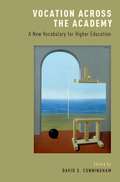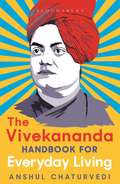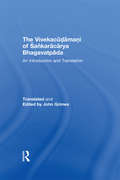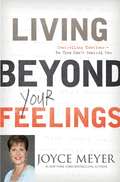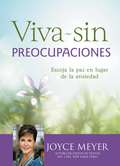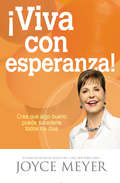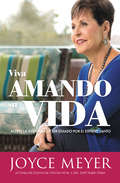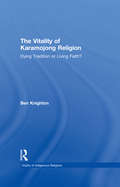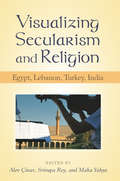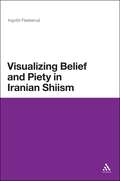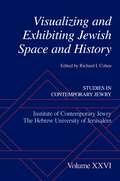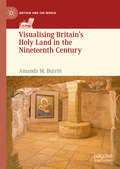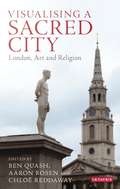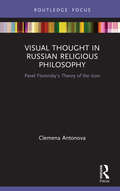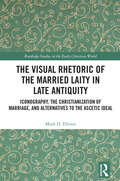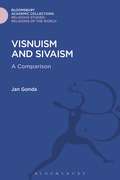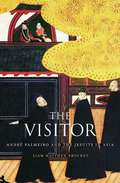- Table View
- List View
Vocation across the Academy: A New Vocabulary for Higher Education
Although the language of vocation was born in a religious context, the contributors in this volume demonstrate that it has now taken root within the broad framework of higher education and has become intertwined with a wide range of concerns. This volume makes a compelling case for vocational reflection and discernment in undergraduate education today, arguing that it will encourage faculty and students alike to venture out of their narrow disciplinary specializations and to reflect on larger questions of meaning and purpose. In conversation with a growing range of scholarly resources, these essays advance the cause of vocational reflection and discernment well beyond its occasional mention in general education courses and career placement offices. The book's thirteen contributors all work in higher education, but they do so as biologists and musicians, sociologists and engineers, doctors and lawyers, college presidents and deans, and scholars of history, literature, and business administration. Together, they demonstrate that vocation has an important role to play across the entire range of traditional academic disciplines and applied fields. Regardless of major, all undergraduates need to consider their current and future responsibilities, determine the stories they will live by, and discover resources for addressing the tensions that will inevitably arise among their multiple callings. Vocation across the Academy will help to reframe current debates about the purpose of higher education. It underscores the important role that colleges and universities can play in encouraging students to reflect more deeply on life's most persistent questions and to consider how they might best contribute to the common good.
Vivekananda Handbook for Everyday Living
by Anshul ChaturvediAN ESSENTIAL GUIDE TO APPLYING THE PRINCIPLES OF VIVEKANANDA TO YOUR EVERYDAY LIFE Are you weighed down by societal expectations, family pressure or the need for digital validation? Vivekananda will help lighten that burden so that you care a little less about the opinions of others.Are you struggling with your work – or your workplace – despite no obvious deficit of skill? Vivekananda will help you redefine how to measure your own success or failure.Does death – your own, or of those closest to you – frighten you? Vivekananda will teach you how to cope with grief and loss, and be the support your loved ones need in trying times.Anecdotal and thought-provoking, The Vivekananda Handbook for Everyday Living unravels the wisdom of Swami Vivekananda's teachings to guide you through your life, whether at home or at the office.
The Vivekacudamani of Sankaracarya Bhagavatpada: An Introduction and Translation
by John GrimesAdvaita Vedanta is one of the most important and widely studied schools of thought in Hindu religion and the Vivekacudamani is one of the most important texts in the Advaita tradition and the most popular philosophical work ascribed to the great Indian philosopher, Sankara. Sankara (c.650-700) is considered to be a giant among giants and probably the most venerated philosopher in India's long history. The Vivekacudamani is in the form of a dialogue between a preceptor (guru) and a pupil (sisya) expounding the quintessence of Advaita in which the pupil humbly approaches the preceptor and, having served the teacher selflessly, implores to be rescued from worldly existence (samsara). The guru promises to teach the way to liberation (moksa) which culminates in the ecstatic experience of one's own Self. This book presents an accessible translation of the entire text and also includes Upanisadic cross-referencing to most of its 580 verses, extensive notes, a lengthy Introduction, list of variant readings, an extensive bibliography, and an index to the verses. All those interested in Indian religion and philosophy, Hindu studies, or Sanskrit, will find this readable English translation of an Indian philosophical classic invaluable.
The Vivekacudamani of Sankaracarya Bhagavatpada: An Introduction and Translation
by John GrimesAdvaita Vedanta is one of the most important and widely studied schools of thought in Hindu religion and the Vivekacudamani is one of the most important texts in the Advaita tradition and the most popular philosophical work ascribed to the great Indian philosopher, Sankara. Sankara (c.650-700) is considered to be a giant among giants and probably the most venerated philosopher in India's long history. The Vivekacudamani is in the form of a dialogue between a preceptor (guru) and a pupil (sisya) expounding the quintessence of Advaita in which the pupil humbly approaches the preceptor and, having served the teacher selflessly, implores to be rescued from worldly existence (samsara). The guru promises to teach the way to liberation (moksa) which culminates in the ecstatic experience of one's own Self. This book presents an accessible translation of the entire text and also includes Upanisadic cross-referencing to most of its 580 verses, extensive notes, a lengthy Introduction, list of variant readings, an extensive bibliography, and an index to the verses. All those interested in Indian religion and philosophy, Hindu studies, or Sanskrit, will find this readable English translation of an Indian philosophical classic invaluable.
Vive por Encima de tus Sentimientos: Controla tus Emociones para que ellas no te Controlen
by Joyce MeyerAunque los sentimientos pueden ser muy fuertes y exigentes, no tenemos que permitirles que gobiernen nuestras vidas. Podemos aprender a manejar nuestras emociones en lugar de permitir que ellas nos manejen a nosotros. Si tenemos que esperar a ver cómo nos sentimos antes de saber que podemos disfrutar del día, entonces estamos dando a los sentimientos control sobre nosotros. Pero afortunadamente, tenemos libre albedrío y podemos tomar decisiones que no están basadas en los sentimientos. Si estamos dispuestos a tomar decisiones correctas independientemente de cómo nos sintamos, Dios siempre será fiel para darnos la fuerza para hacerlo. Si estás preparado para dominar tus emociones, este libro es para ti. Creo que podré ayudarte a entender algunos de tus sentimientos, pero entenderlos no es tan importante como controlarlos. Toma la decisión de que ya no seguirás permitiendo que tus sentimientos te controlen. --Joyce Meyer, de la Introducción
Viva Valientemente: Enfrente lo que Sea, Aunque Sea con Miedo
by Joyce MeyerYou have fear. And if you don't face your fear, it can paralyze you and hold you back from enjoying life to the fullest. Joyce Meyer, #1 New York Times bestselling author, wants to show you that to break out of fear, you must face it head-on. The good news is God wants to give you the strength you need to beat fear and live courageously. That's why He tells you repeatedly throughout the Bible to "fear not" because He is with you. In LIVING COURAGEOUSLY, Joyce explains how you can overcome the debilitating power of fear by learning to confront and conquer any and every fear you have. Blending practical insights, her personal experiences, and inspiring Scripture, this book will teach you how to conquer any fear, reach your greatest potential, and start living life to the fullest. Whether you fear being inadequate, being rejected, or losing control, you can learn how to triumph over any obstacle-even when you feel fearful. You can face anything and just "do it afraid!" Chapter titles include:Say Good-bye to FearThe Source of FearCultivating CourageThe Creative Power of Fear and FaithDo It Afraid!
Viva Valientemente: Enfrente lo que Sea, Aunque Sea con Miedo
by Joyce MeyerYou have fear. And if you don't face your fear, it can paralyze you and hold you back from enjoying life to the fullest. Joyce Meyer, #1 New York Times bestselling author, wants to show you that to break out of fear, you must face it head-on.The good news is God wants to give you the strength you need to beat fear and live courageously. That's why He tells you repeatedly throughout the Bible to "fear not" because He is with you.In Living Courageously, Joyce explains how you can overcome the debilitating power of fear by learning to confront and conquer any and every fear you have. Blending practical insights, her personal experiences, and inspiring Scripture, this book will teach you how to conquer any fear, reach your greatest potential, and start living life to the fullest. Whether you fear being inadequate, being rejected, or losing control, you can learn how to triumph over any obstacle-even when you feel fearful. You can face anything and just "do it afraid!"
Viva sin preocupaciones: Escoja la paz en lugar de la ansiedad
by Joyce MeyerIn this compact adaptation of Be Anxious for Nothing, #1 New York Times bestselling author Joyce Meyer shows readers how to rid themselves of worry and fear by drawing on the peace of God.Difficult times are part of living in this world. However, God has provided a way for us to enjoy peace as part daily life. We can choose either to allow ourselves to be burdened with worry and anxiety or to live in the peace and joy that God wants for our lives. Joyce Meyer shows how to rely on God's strength during difficult circumstances by revealing the nature of God's peace as found in Scripture. She explains how to trade anxiety for joy, develop a childlike attitude of faith, and give our worries to the Lord.
Viva sin preocupaciones: Escoja la paz en lugar de la ansiedad
by Joyce MeyerIn this compact adaptation of Be Anxious for Nothing, #1 New York Times bestselling author Joyce Meyer shows readers how to rid themselves of worry and fear by drawing on the peace of God.Difficult times are part of living in this world. However, God has provided a way for us to enjoy peace as part daily life. We can choose either to allow ourselves to be burdened with worry and anxiety or to live in the peace and joy that God wants for our lives. Joyce Meyer shows how to rely on God's strength during difficult circumstances by revealing the nature of God's peace as found in Scripture. She explains how to trade anxiety for joy, develop a childlike attitude of faith, and give our worries to the Lord.
¡Viva con esperanza!: Crea que algo bueno puede sucederle todos los días
by Joyce Meyer#1 New York Times bestselling author Joyce Meyer teaches readers how to transform their lives by tapping into the power of hope. One of the most powerful forces in the universe is hope -- the happy and confident anticipation that something good is going to happen. Regardless of where one is in life, it is impossible to live successfully and to the fullest without hope. With Get Your Hopes Up! Joyce will help readers achieve a lasting sense of hope, built on their faith in God. Hope is only as strong as its source. This book will help readers avoid misplacing their trust in unreliable things, and help them ground their hope steadfastly in God for limitless joy and possibilities for their lives. As Joyce explains, "Without hope in God, there isn't much you can do, but with Hope in God, there isn't much you can't do."
Viva amando su vida: Acepte la aventura de ser dirigido por el Esp¿ritu Santo
by Joyce MeyerYou may say that you love your family, your spouse, your church, or the Lord. You may also express love for more temporal things like a good cup of coffee, your home, or a nice dinner at your favorite restaurant. But it is rarer to truly say "I love my life!" It's common to be more frustrated with life than at peace with it, because the daily grind wears you down. Responsibilities and burdens become heavy and rob you of the happiness you're meant to have as a child of God. But you can be hopeful, learn to rise above your challenges, and be filled with wonder at what God might do every day. Written by #1 New York Times bestselling author Joyce Meyer, who has gone from heartache to happiness through Christ, this book is the key to shifting your perspective so that you may also relish every moment and every part of life. You will learn how to love life fully, in spite of your obstacles, and experience the happiness that is promised to you. Joyce will explain: Why you can't love life unless love is the central theme of it,Why your attitude affects your life more than any outside circumstances,How the love, help, and kindness you give away will come back to you immeasurably,How to look to the future and keep your joy,And so much more! God has already blessed you with a life to love -- and it's time to start LIVING A LIFE YOU LOVE.
The Vitality of Karamojong Religion: Dying Tradition or Living Faith? (Vitality of Indigenous Religions)
by Ben KnightonHow long can a traditional religion survive the impact of world religions, state hegemony, and globalization? The ’Karamoja problem’ is one that has perplexed colonial and independent governments alike. Now Karamojong notoriety for armed cattle raiding has attracted the attention of the UN and USAID since the proliferation of small arms in the pastoralist belt across Africa from Sudan to stateless Somalia is deemed a threat to world security. The consequences are ethnocidal, but what makes African peoples stand out against state and global governance? The traditional African religion of the Karamojong, despite the multiple external influences of the twentieth century and earlier, has remained at the heart of their culture as it has changed through time. Drawing on oral accounts and the language itself, as well as his extensive experience of living and working in the region, Knighton avoids Western perspectivism to highlight the successful reassertion of African beliefs and values over repeated attempts by interventionists to replace or subvert them. Knighton argues that the religious aspect of Karamojong culture, with its persistent faith dimension, is one of the key factors that have enabled them to maintain their amazing degree of religious, political, and military autonomy in the postmodern world. Using historical and anthropological approaches, the real continuities within the culture and the reasons for mysterious vitality of Karamojong religion are explored.
The Vitality of Karamojong Religion: Dying Tradition or Living Faith? (Vitality of Indigenous Religions)
by Ben KnightonHow long can a traditional religion survive the impact of world religions, state hegemony, and globalization? The ’Karamoja problem’ is one that has perplexed colonial and independent governments alike. Now Karamojong notoriety for armed cattle raiding has attracted the attention of the UN and USAID since the proliferation of small arms in the pastoralist belt across Africa from Sudan to stateless Somalia is deemed a threat to world security. The consequences are ethnocidal, but what makes African peoples stand out against state and global governance? The traditional African religion of the Karamojong, despite the multiple external influences of the twentieth century and earlier, has remained at the heart of their culture as it has changed through time. Drawing on oral accounts and the language itself, as well as his extensive experience of living and working in the region, Knighton avoids Western perspectivism to highlight the successful reassertion of African beliefs and values over repeated attempts by interventionists to replace or subvert them. Knighton argues that the religious aspect of Karamojong culture, with its persistent faith dimension, is one of the key factors that have enabled them to maintain their amazing degree of religious, political, and military autonomy in the postmodern world. Using historical and anthropological approaches, the real continuities within the culture and the reasons for mysterious vitality of Karamojong religion are explored.
Visualizing Secularism and Religion: Egypt, Lebanon, Turkey, India
by Maha YahyaOver the past two decades secular polities across the globe have witnessed an increasing turn to religion-based political movements, such as the rise of political Islam and Hindu nationalism, which have been fueling new and alternative notions of nationhood and national ideologies. The rise of such movements has initiated widespread debates over the meaning, efficacy, and normative worth of secularism. Visualizing Secularism and Religion examines the constitutive role of religion in the formation of secular-national public spheres in the Middle East and South Asia, arguing that in order to establish secularism as the dominant national ideology of countries such as Turkey, Lebanon, and India, the discourses, practices, and institutions of secular nation-building include rather than exclude religion as a presence within the public sphere. The contributors examine three fields---urban space and architecture, media, and public rituals such as parades, processions, and commemorative festivals---with a view to exploring how the relation between secularism, religion, and nationalism is displayed and performed. This approach demands a reconceptualization of secularism as an array of contextually specific practices, ideologies, subjectivities, and "performances" rather than as simply an abstract legal bundle of rights and policies.
Visualizing Belief and Piety in Iranian Shiism
by Ingvild FlaskerudThe representation of prophets and saints in Islam is erroneously considered nonexistent by many scholars of Islam, Muslims, and the general public. The issue is often dealt with superficially without attention to its deep roots in piety and religiosity. Visualizing Belief and Piety in Iranian Shiism offers new understanding of Islamic iconography and Muslim perspectives on the use of imageries in ritual contexts and devotional life. Combining iconographic and ethnographic approaches, Ingvild Flaskerud introduces and analyzes imageries (tile-paintings, posters and wall-hangings), ritual contexts and interviews with male and female local viewers to discuss the representation, reception and function of imageries in contemporary Iranian Shia environments. This book presents the argument that images and decorative programmes have stimulating qualities to mentally evoke the saints in the minds of devotees and inspire their recollection, transforming emotions and stimulating cultic behaviours. Visualization and seeing are significant to the dissemination of religious knowledge, the understanding of spiritual and ethical values, the promotion of personal piety, and functions as modes of venerating God and the saints.
Visualizing and Exhibiting Jewish Space and History (Studies in Contemporary Jewry)
by Richard I. CohenContinuing its distinguished tradition of focusing on central political, sociological, and cultural issues of Jewish life in the last century, Volume XXVI of the annual Studies in Contemporary Jewry examines the visual revolution that has overtaken Jewish cultural life in the twentieth century onwards, with special attention given to the evolution of Jewish museums. Bringing together leading curators and scholars, Visualizing and Exhibiting Jewish Space and History treats various forms of Jewish representation in museums in Europe and the United States before the Second World War and inquires into the nature and proliferation of Jewish museums following the Holocaust and the fall of Communism in Western and Eastern Europe. In addition, a pair of essays dedicated to six exhibitions that took place in Israel in 2008 to mark six decades of Israeli art raises significant issues on the relationship between art and gender, and art and politics. An introductory essay highlights the dramatic transformation in the appreciation of the visual in Jewish culture. The scope of the symposium offers one of the first scholarly attempts to treat this theme in several countries. Also featured in this volume are a provocative essay on the nature of antisemitism in twentieth-century English society; review essays on Jewish fundamentalism and recent works on the subject of the Holocaust in occupied Soviet territories; and reviews of new titles in Jewish Studies..
Visualising Britain’s Holy Land in the Nineteenth Century (Britain and the World)
by Amanda M. BurrittThis book demonstrates the complexity of nineteenth-century Britain’s engagement with Palestine and its surrounds through the conceptual framing of the region as the Holy Land. British engagement with the region of the Near East in the nineteenth century was multi-faceted, and part of its complexity was exemplified in the powerful relationship between developing and diverse Protestant theologies, visual culture and imperial identity. Britain’s Holy Land was visualised through pictorial representation which helped Christians to imagine the land in which familiar Bible stories took place. This book explores ways in which the geopolitical Holy Land was understood as embodying biblical land, biblical history and biblical typology. Through case studies of three British artists, David Roberts, David Wilkie and William Holman Hunt, this book provides a nuanced interpretation of some of the motivations, religious perspectives, attitudes and behaviours of British Protestants in their relationship with the Near East at the time.
Visualising a Sacred City: London, Art and Religion (Library of Modern Religion)
by Chloe Reddaway Aaron Rosen Ben QuashWilliam Blake famously imagined 'Jerusalem builded here' in London. But Blake was not the first or the last to visualise a shimmering new metropolis on the banks of the River Thames. For example, the Romans erected a temple to Mithras in their ancient city of Londinium; medieval Londoners created Temple Church in memory of the Holy Sepulchre in which Jesus was buried; and Christopher Wren reshaped the skyline of the entire city with his visionary dome and spires after the Great Fire of London in 1666. In the modern period, the fabric of London has been rewoven in the image of its many immigrants from the Caribbean, South Asia, Eastern Europe and elsewhere. While previous books have examined literary depictions of the city, this is the first examination of the religious imaginary of the metropolis through the prism of the visual arts. Adopting a broad multicultural and multi-faith perspective, and making space for practitioners as well as scholars, its topics range from ancient archaeological remains and Victorian murals and cemeteries to contemporary documentaries and political cartoons.
Visual Thought in Russian Religious Philosophy: Pavel Florensky's Theory of the Icon (Routledge Focus on Religion)
by Clemena AntonovaThis book considers a movement within Russian religious philosophy known as "full unity" (vseedinstvo), with a focus on one of its main representatives, Pavel Florensky (1882–1937). Often referred to as "the Russian Leonardo," Florensky was an important figure of the Russian religious renaissance around the beginning of the twentieth century. This book shows that his philosophy, conceptualized in his theory of the icon, brings together the problem of the "religious turn" and the "pictorial turn" in modern culture, as well as contributing to contemporary debates on religion and secularism. Organized around the themes of full unity and visuality, the book examines Florensky’s definition of the icon as "energetic symbol," drawing on St. Gregory Palamas, before offering a theological reading of Florensky’s theory of the pictorial space of the icon. It then turns to Florensky’s idea of space in the icon as Non-Euclidean. Finally, the icon is placed within wider debates provoked by Bolshevik cultural policy, which extend to current discussions concerning religion, modernity, and art. Offering an important contribution from Russian religious philosophy to issues of contemporary modernity, this book will be of interest to scholars of religious philosophy, Russian studies, theology and the arts, and the medieval icon.
Visual Thought in Russian Religious Philosophy: Pavel Florensky's Theory of the Icon (Routledge Focus on Religion)
by Clemena AntonovaThis book considers a movement within Russian religious philosophy known as "full unity" (vseedinstvo), with a focus on one of its main representatives, Pavel Florensky (1882–1937). Often referred to as "the Russian Leonardo," Florensky was an important figure of the Russian religious renaissance around the beginning of the twentieth century. This book shows that his philosophy, conceptualized in his theory of the icon, brings together the problem of the "religious turn" and the "pictorial turn" in modern culture, as well as contributing to contemporary debates on religion and secularism. Organized around the themes of full unity and visuality, the book examines Florensky’s definition of the icon as "energetic symbol," drawing on St. Gregory Palamas, before offering a theological reading of Florensky’s theory of the pictorial space of the icon. It then turns to Florensky’s idea of space in the icon as Non-Euclidean. Finally, the icon is placed within wider debates provoked by Bolshevik cultural policy, which extend to current discussions concerning religion, modernity, and art. Offering an important contribution from Russian religious philosophy to issues of contemporary modernity, this book will be of interest to scholars of religious philosophy, Russian studies, theology and the arts, and the medieval icon.
The Visual Rhetoric of the Married Laity in Late Antiquity: Iconography, the Christianization of Marriage, and Alternatives to the Ascetic Ideal (Routledge Studies in the Early Christian World)
by Mark D. EllisonThis study examines third- and fourth-century portraits of married Christians and associated images, reading them as visual rhetoric in early Christian conversations about marriage and celibacy, and recovering lay perspectives underrepresented or missing in literary sources. Historians of early Christianity have grown increasingly aware that written sources display an enthusiasm for asceticism and sexual renunciation that was far from representative of the lives of most early Christians. Often called a “silent majority,” the married laity in fact left behind a significant body of work in the material record. Particularly in and around Rome, they commissioned and used such objects as sarcophagi, paintings, glass vessels, finger rings, luxury silver, other jewellery items, gems, and seals that bore their portraits and other iconographic forms of self-representation. This study is the first to undertake a sustained exploration of these material sources in the context of early Christian discourses and practices related to marriage, sexuality, and celibacy. Reading this visual evidence increases understanding of the population who created it, the religious commitments they asserted, and the comparatively moderate forms of piety they set forth as meritorious alternatives to the ascetic ideal. In their visual rhetoric, these artifacts and images comprise additional voices in Late Antique conversations about idealized ways of Christian life, and ultimately provide a fuller picture of the early Christian world. Plentifully illustrated with photographs and drawings, this volume provides readers access to primary material evidence. Such evidence, like textual sources, require critical interpretation; this study sets forth a careful methodology for iconographic analysis and applies it to identify the potential intentions of patrons and artists and the perceptions of viewers. It compares iconography to literary sources and ritual practices as part of the interpretive process, clarifying the ways images had a rhetorical edge and contributed to larger conversations. Accessibly written, The Visual Rhetoric of the Married Laity in Late Antiquity is of interest to students and scholars working on Late Antiquity, early Christian and late Roman social history, marriage and celibacy in early Christianity, and early Christian, Roman, and Byzantine art.
The Visual Rhetoric of the Married Laity in Late Antiquity: Iconography, the Christianization of Marriage, and Alternatives to the Ascetic Ideal (Routledge Studies in the Early Christian World)
by Mark D. EllisonThis study examines third- and fourth-century portraits of married Christians and associated images, reading them as visual rhetoric in early Christian conversations about marriage and celibacy, and recovering lay perspectives underrepresented or missing in literary sources. Historians of early Christianity have grown increasingly aware that written sources display an enthusiasm for asceticism and sexual renunciation that was far from representative of the lives of most early Christians. Often called a “silent majority,” the married laity in fact left behind a significant body of work in the material record. Particularly in and around Rome, they commissioned and used such objects as sarcophagi, paintings, glass vessels, finger rings, luxury silver, other jewellery items, gems, and seals that bore their portraits and other iconographic forms of self-representation. This study is the first to undertake a sustained exploration of these material sources in the context of early Christian discourses and practices related to marriage, sexuality, and celibacy. Reading this visual evidence increases understanding of the population who created it, the religious commitments they asserted, and the comparatively moderate forms of piety they set forth as meritorious alternatives to the ascetic ideal. In their visual rhetoric, these artifacts and images comprise additional voices in Late Antique conversations about idealized ways of Christian life, and ultimately provide a fuller picture of the early Christian world. Plentifully illustrated with photographs and drawings, this volume provides readers access to primary material evidence. Such evidence, like textual sources, require critical interpretation; this study sets forth a careful methodology for iconographic analysis and applies it to identify the potential intentions of patrons and artists and the perceptions of viewers. It compares iconography to literary sources and ritual practices as part of the interpretive process, clarifying the ways images had a rhetorical edge and contributed to larger conversations. Accessibly written, The Visual Rhetoric of the Married Laity in Late Antiquity is of interest to students and scholars working on Late Antiquity, early Christian and late Roman social history, marriage and celibacy in early Christianity, and early Christian, Roman, and Byzantine art.
Visnuism and Sivaism: A Comparison (Religious Studies: Bloomsbury Academic Collections)
by Jan GondaThis book contains a detailed discussion of some of the historical, doctrinal, ritual and literary aspects of both Vaishnavism and Shaivism, as first presented – then as Visnuism and Sivaism – at the 1969 Jordan Lecture in Comparative Religion. By comparing both religions, the main characteristics of each tradition is delineated and questions regarding their origins, theological doctrines and practices are reconsidered. Special emphasis is laid on their various interrelations, for example, the partly parallel and often divergent development of their rituals and philosophies.
The Visitor: Andre Palmeiro and the Jesuits in Asia
by Liam Matthew BrockeyIn an age when few ventured beyond their birthplace, André Palmeiro left Portugal to inspect Jesuit missions from Mozambique to Japan. A global history in the guise of biography, The Visitor tells the story of a theologian whose travels bore witness to the fruitful contact—and violent collision—of East and West in the early modern era.
